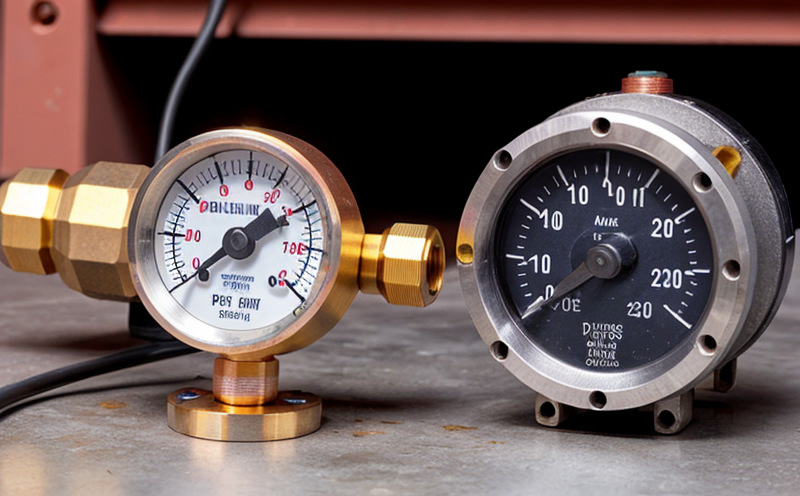Differential pressure inspection
The differential pressure inspection is a critical process used in HVAC and ventilation systems to ensure optimal performance and efficiency. This method is particularly important as it helps identify any inefficiencies or potential failures within the system, which can lead to significant energy savings and improved indoor air quality.
Differential pressure refers to the difference in pressure between two points of an airflow circuit. By measuring this difference, technicians can assess the condition of various components such as filters, ducts, and fans. A high differential pressure could indicate blockages or obstructions that need immediate attention, whereas a low differential pressure might suggest issues with fan performance or filter efficiency.
For HVAC systems, proper functioning is crucial for maintaining comfort levels while minimizing energy consumption. Over time, dust, debris, and other contaminants can accumulate in the system, leading to reduced airflow and increased energy costs. Regular differential pressure inspections play a vital role in preventing these problems by allowing early detection of issues.
The inspection process typically involves placing sensors at strategic locations throughout the HVAC network to measure the pressure drop across specific sections. These measurements are then compared against established benchmarks or historical data to determine if any action is needed. This approach ensures consistency and accuracy, providing reliable insights into system health.
Accurate measurement tools and techniques are essential for conducting effective differential pressure inspections. Various instruments such as manometers, digital anemometers, and flow meters are commonly used in this process. Each tool serves a unique purpose depending on the specific requirements of the inspection task at hand.
Understanding the implications of differential pressure readings is equally important. For example, excessive resistance might indicate dirty filters or clogged ducts requiring cleaning or replacement. Conversely, abnormally low values could signal fan malfunctions that need repair or replacement. By addressing these issues promptly, businesses can extend equipment life spans and reduce operational costs significantly.
In conclusion, differential pressure inspections are indispensable for maintaining high standards of HVAC and ventilation systems performance. They offer valuable insights into system health by detecting early signs of deterioration before they escalate into more serious problems. Regularly scheduled inspections not only enhance overall efficiency but also contribute positively towards sustainability goals by promoting energy conservation practices.
Applied Standards
The differential pressure inspection adheres to several international standards aimed at ensuring accuracy, consistency, and reliability in testing procedures. These include:
- ISO 14064-1: This standard provides a framework for quantifying greenhouse gas emissions from industrial processes.
- ASTM E963: It specifies the use of differential pressure gauges for measuring static, dynamic, and total pressures in duct systems.
- EN 14752-1: This European standard outlines requirements for testing and commissioning HVAC systems, including procedures related to air flow measurements which often involve differential pressure calculations.
These standards provide clear guidelines on how to perform accurate differential pressure inspections, ensuring that results are comparable across different facilities. Adherence to these norms also helps in maintaining compliance with local regulations concerning emissions and energy efficiency.
Scope and Methodology
| Aspect | Description |
|---|---|
| Preparation | The area to be inspected must first be prepared by ensuring all doors and windows are closed, minimizing any external interference with the airflow. |
| Sensor Placement | At strategic points along the HVAC network, sensors are installed to accurately measure differential pressures at different sections of the system. |
| Data Collection | Detailed records of all readings taken during the inspection process are documented for further analysis and comparison purposes. |
| Analysis | Readings collected from various points are analyzed against set benchmarks or historical data to identify any anomalies indicating potential issues within the system. |
| Action Plan | A comprehensive action plan detailing necessary corrective actions based on findings is prepared for immediate implementation where required. |
The scope of a differential pressure inspection includes evaluating various aspects of an HVAC or ventilation system. Key areas include assessing filter efficiency, checking ductwork integrity, examining fan performance, and monitoring overall airflow distribution. By thoroughly examining these components, technicians can pinpoint specific areas needing attention, thereby ensuring the best possible operation of the entire system.
The methodology employed ensures precision throughout every step of the inspection process. Rigorous adherence to established protocols guarantees reliable outcomes that contribute significantly towards maintaining optimal conditions within buildings equipped with such systems.
Environmental and Sustainability Contributions
- Emission Reduction: By identifying blockages or obstructions early through differential pressure inspections, unnecessary strain on fans is avoided. This leads to lower energy consumption and reduced greenhouse gas emissions.
- Resource Optimization: Efficient operation of HVAC systems contributes directly to resource optimization by preventing wasteful use of valuable resources like electricity.
- Cost Savings: Regular inspections help avoid costly repairs by catching problems before they become severe issues. This translates into significant financial savings over time.
- Air Quality Improvement: Ensuring proper airflow through regular differential pressure checks helps maintain good indoor air quality, enhancing occupant comfort and health.
Incorporating differential pressure inspections into routine maintenance schedules can have far-reaching positive impacts on both the environment and operational costs. These benefits make them an integral part of any sustainable building management strategy.





